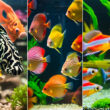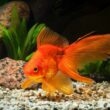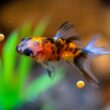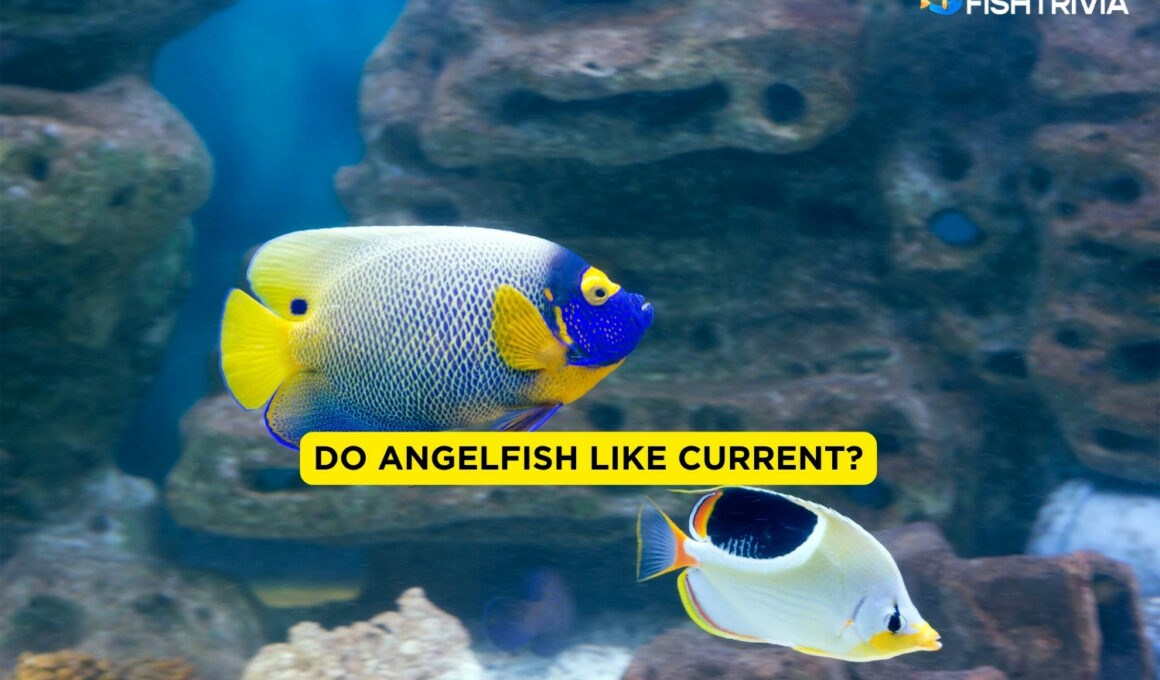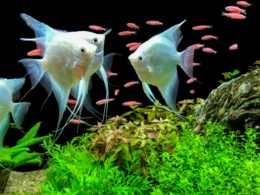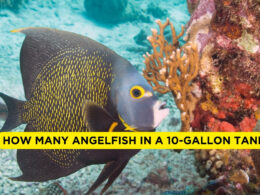In this article Show
Do angelfish like current? As an experienced fish keeper, I understand the nuances and specifics that contribute to the well-being of these elegant creatures in a home aquarium setting. Angelfish, known for their striking beauty and graceful movements, is a popular choice among aquarium enthusiasts.
But when it comes to their comfort and health, understanding their preference for water conditions, particularly water currents, is crucial. In their natural habitat, angelfish thrive in environments that are often distinct from the typical home aquarium. So, how does this translate to their preferences in an artificial setting?
In this article, we’ll explore the relationship between angelfish and water currents. We’ll look at how these currents affect their behavior and well-being, drawing upon both scientific understanding and practical experience. The goal is to provide clear, straightforward insights that will help you create the best possible environment for your angelfish.
Do angelfish like current?
Yes, angelfish generally prefer environments with gentle water currents. These graceful freshwater fish, popular in home aquariums, originate from river systems where a mild flow is natural. However, strong currents can stress them. In your aquarium, replicating their native, calm water conditions, with a soft, steady flow, is key to maintaining their health and happiness.
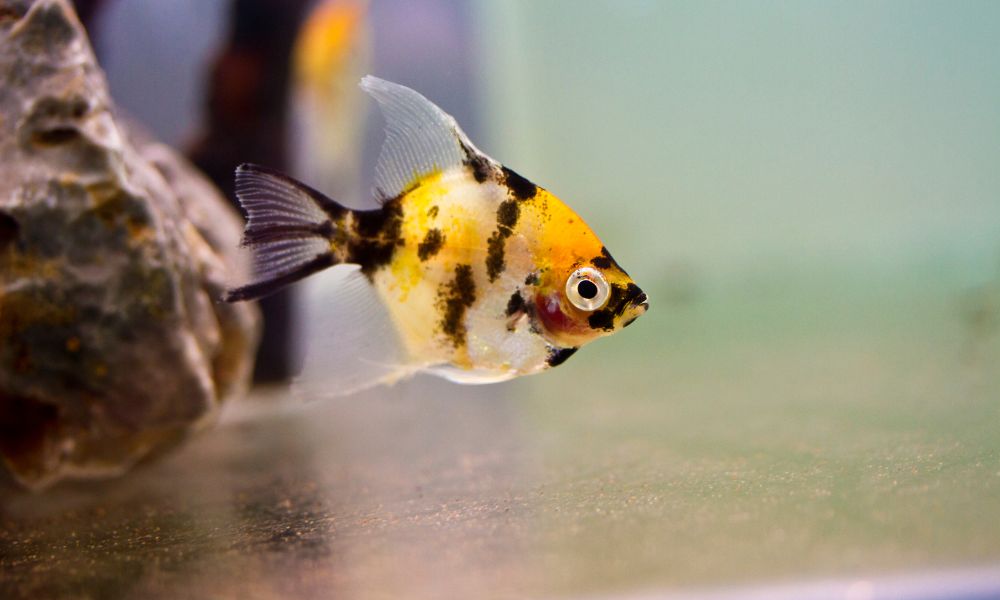
Angelfish and Their Natural Habitat
Angelfish, a centerpiece in many home aquariums, hail from the tranquil river basins of South America, particularly the Amazon River system. In these natural settings, they flourish in a unique ecosystem that significantly differs from the typical home aquarium environment.
The natural habitat of angelfish is characterized by warm, slightly acidic waters, with temperatures usually ranging between 75°F and 82°F (24°C to 28°C).
These waters are often stained with tannins from decaying vegetation, giving them a distinctive, tea-like appearance. This environment provides a soft, subdued lighting condition, which is a stark contrast to the bright lights often used in aquariums.
In the wild, angelfish are accustomed to a habitat with plenty of hiding spots and territorial landmarks. They navigate through densely planted areas, driftwood, and tree roots, which offer shelter and safety. This aspect of their natural habitat is essential to replicate in home aquariums to provide a sense of security and to mimic their natural environment.
Water flow in their natural habitat is typically gentle. While the Amazon basin can have areas of stronger currents, angelfish are often found in slower-moving parts of rivers or in calm floodplain areas. This is crucial to consider when setting up an aquarium, as too strong a current can cause stress and hinder the angelfish’s ability to navigate and display natural behaviors.
The water quality in their natural habitat is also a vital aspect to consider. The Amazon’s water is often soft and has a low mineral content, which is quite different from the tap water used in many home aquariums. Adjusting the water hardness and pH levels in your aquarium to mimic these natural conditions is key for the well-being of angelfish.
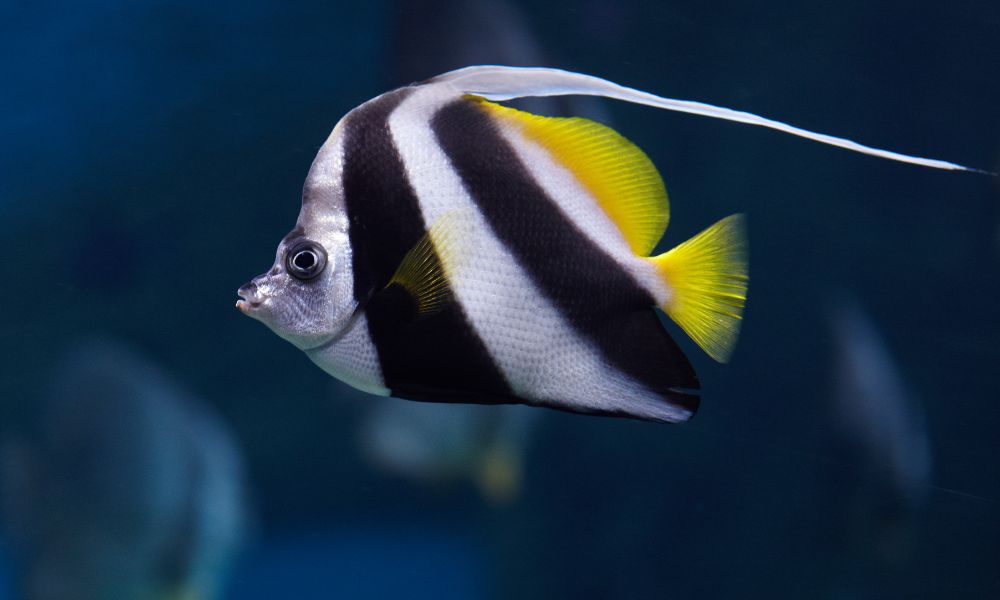
Setting Up Your Aquarium for Angelfish
Creating an ideal environment for angelfish in your home aquarium is essential for their health and happiness. Here are some guidelines and tips to help you set up a thriving habitat for these elegant fish.
1. Tank Size and Shape
- Size: Angelfish need ample space to swim and grow. A tank of at least 20 gallons is recommended for a pair, but larger is better, especially if you plan to keep multiple fish.
- Shape: Opt for a taller tank rather than a wider one. Angelfish are tall-bodied and appreciate vertical space to swim.
2. Water Conditions
- Temperature: Maintain water temperature between 75°F and 82°F (24°C to 28°C).
- pH Levels: Aim for a slightly acidic to neutral pH, around 6.5 to 7.0.
- Hardness: Soft to moderately hard water is ideal, reflecting their natural Amazonian habitat.
3. Filtration System
- Choose a filtration system that can handle the size of your tank and the bio load of your fish. Angelfish prefer clean and well-oxygenated water.
- Avoid filters that create too strong a current. Canister or internal filters often provide adequate filtration without excessive water movement.
4. Adjusting Water Flow
- If your filter creates a strong current, you can adjust it by directing the flow toward the side of the tank or using decorations to diffuse the flow.
- Use plants, rocks, or driftwood to create calm areas in the tank where angelfish can rest or hide from the current.
5. Plants and Decor
- Angelfish thrive in a planted environment that mimics their natural habitat. Use a variety of plants, including tall species that reach towards the surface.
- Include hiding spots and territorial markers like driftwood, caves, or rocks to provide shelter and reduce stress.
6. Lighting
- Provide moderate lighting to mimic their natural, subdued light habitat. Too bright lighting can stress angelfish.
- Consider a light with adjustable intensity or use floating plants to create shaded areas.
7. Tank Mates
- Choose peaceful, similarly sized fish as tank mates to avoid aggression and stress.
- Avoid fin-nipping species, as angelfish have long, flowing fins that are tempting targets.
8. Regular Maintenance
- Perform regular water changes, ideally 10-15% weekly, to keep the water parameters stable.
- Monitor water quality regularly using a test kit to ensure the environment remains healthy for your angelfish.
By following these guidelines, you can create an ideal home aquarium environment that caters to the specific needs of angelfish, promoting their well-being and allowing them to display their natural beauty and behaviors.


